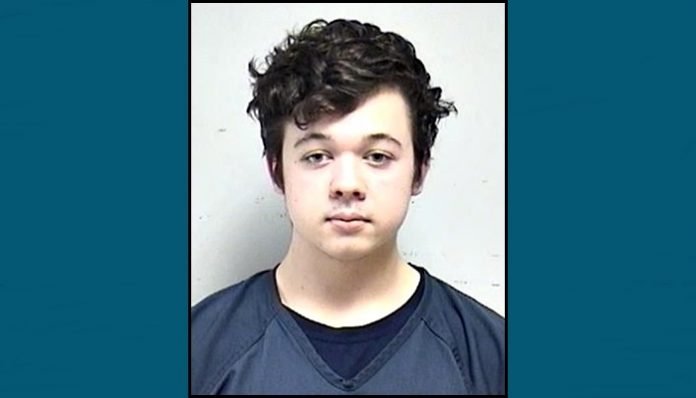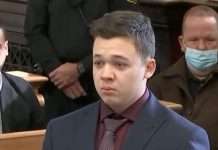Nov. 17 (UPI) — A Wisconsin jury concluded their second day of deliberations Wednesday in the homicide trial of Kyle Rittenhouse, an Illinois teen who shot to death two men during protests last year.
The 12-member panel was expected to reconvene at 9 a.m. Thursday in Kenosha.
While most of their deliberations have taken place outside the courtroom, they returned briefly Wednesday to view two videos — an FBI surveillance video and a drone video of the shooting of Joseph Rosenbaum.
Earlier in the day, attorneys argued a defense motion asking Kenosha County Circuit Court Judge Bruce Schroeder to dismiss the case. The defense took issue with the quality of drone video the prosecution provided them. Rittenhouse’s attorneys said their copy of the video was of a lesser quality than what the prosecutors had access to.
“What that means is the video provided to the defense was not as clear as the video kept by the state,” the motion read.
Prosecutors blamed the issue on a file compression that might have taken place when the video was emailed to the defense. They said they shouldn’t be punished for “something that happened in the transfer that we had no knowledge of.”
“We didn’t compress anything, we didn’t change anything,” prosecutor James Kraus said, according to CNN.
Schroeder said he’d like to have an expert explain the issue to him before he rules on the motion.
Earlier in court, the judge took issue with media coverage of his actions during the trial, the Minneapolis Star Tribune reported, including his decision to not allow the men Rittenhouse killed and injured to be called “victims” and allowing Rittenhouse to participate in blindly selecting which jurors will serve as alternates.
“I would admit that there are not a large number of courts that do that, maybe not any,” Schroeder said.
“It’s just a shame that irresponsible statements are being made,” he added regarding an article about how he hasn’t ruled on a mistrial motion.
He said the scrutiny has made him think twice about allowing televised proceedings in the future.
Rittenhouse is on trial for the shooting deaths of Rosenbaum and Anthony Huber and injuring Gaige Grosskreutz on Aug. 25, 2020, during protests related to the police shooting of Jacob Blake.
Prosecutors argued that Rittenhouse, who was 17 at the time of the shooting, acted recklessly by attending the protests with an AR-15-style rifle, inciting fear and violence in those around him. Defense attorneys, however, said their client fired his gun in self-defense.
Rittenhouse testified Nov. 10, breaking down in tears and telling the court he did nothing wrong. He said he traveled to Kenosha from his home in Antioch, Ill., to protect other people’s properties from potential damage during the protests.
Under cross-examination, he said he didn’t mean to kill anyone but admitted he used deadly force in self-defense. He said he encountered Rosenbaum “walking with a steel chain” and that he was screaming threats.
Rittenhouse faces charges of first-degree reckless homicide, use of a dangerous weapon; two counts of first-degree recklessly endangering safety, use of a dangerous weapon; first-degree intentional homicide, use of a dangerous weapon; and attempted first-degree intentional homicide, use of a dangerous weapon.
Schroeder also added lesser charges for the jury to consider in his instructions for deliberation, and dismissed two charges — possession of a dangerous weapon by a person under 18 and failure to comply with an emergency order from state or local government concerning a curfew.






